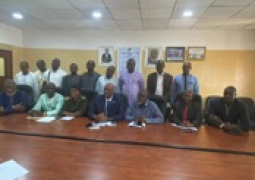“The Flash Floods that hit The Gambia are amongst the worst to have in nearly half a century. The torrential rain and thunderstorms caused widespread damage and affected large parts of the country, particularly the densely populated Banjul area,” the agency stated in the background of the report.
According to the Department of Water Resources, rainfall quantity recorded during this period was 276 mm at Banjul International Airport, Yundum.”
The country, it added, had previously experienced a similar event on 31st July 1998, however, with significantly less rainfall (175.4mm) recorded.
Historical records of floods go back as far as 1948. Since then The Gambia has experienced significant floods in 1988, 1999, and 2002, 2010, 2020. This shows that the frequency of flash floods and climate-related shocks is increasing at an alarming rate.
“Since the initial flash floods, there have been almost daily heavy downpours in many parts, particularly on the 5th and 6th of August which exacerbated the floods in many communities and meant that water levels are yet to recede.”
“The rainy season continues and the level of the river Gambia is rising due to heavy downpours upstream, including at its source in Senegal. The combination of heavy rainfall, rising river and sea levels and the low-lying land on which much of Banjul is situated adds serious concerns, particularly to vulnerable populations.”
According to the NDMA, based on the satellite analysis of the affected areas, it is estimated that the flash floods have affected the lives of hundreds of thousands of people in The Gambia. “This initial assessment is being reinforced by GIS specialists who are mapping the affected areas and assessing the impact on the populations. The ongoing assessments have identified at least 47,104 people who are directly affected by the recent heavy downpours.”
“The suburbs in urban settlements have been the hardest hit by the recent floods. Rural areas have also suffered greatly. A total of 7 fatalities have been reported as a direct consequence of the recent flash floods with many more lives at risk.”
Thus far, the agency noted, a total of 4,186 affected households have been documented around the country. The most affected regions are Kanifing Municipal Council with 1,657 affected households and West Coast Region with 1,483 affected households.
“Children under 5 account for 21% of affected populations and are particularly at risk of water-borne diseases caused by water contamination. While females account for 51% of the total and 3,088 pregnant and breastfeeding women have been recorded as affected thus far. 1,824 persons with disabilities have been affected.”




